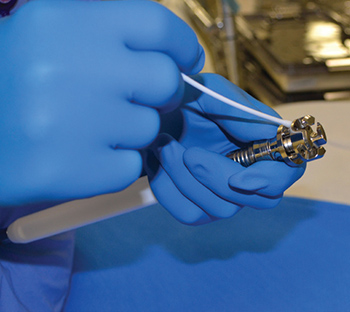Literature review: Endoscope disinfection failures highlight need for stronger sterilization practices

Editor's Note High-level disinfection (HLD) fails to reliably eliminate harmful microbes from flexible endoscopes in real-world healthcare settings, according to a review of endoscope processing effectiveness published April 8 in the American Journal of Infection Control. The review highlights routine breaches in cleaning protocols and links contaminated endoscopes to numerous…
Common inspection points for surgical instrumentation

Inspecting surgical devices is a time-consuming process. However, diligently checking every instrument prior to sterilization is essential to ensuring safe, proper functioning. As the last people to see devices before they are used for patient care, sterile processing technicians must be thorough. Exterior surfaces should be inspected for flaws such…
Forced-air device outperforms standard endoscope drying practices, study shows

Editor's Note Authors of a recent study evaluating the effectiveness of a forced-air drying system for endoscopes argue that the results reinforce the need to re-evaluate standard drying practices. Findings were published February 24 in the American Journal of Infection Control. Wet environments resulting from inadequate drying practices can result…
Effect of alcohol flush on endoscope channel drying, microbial outgrowth
Editor's Note This study by researchers at Steris, Mentor, Ohio, finds that flushing flexible endoscope channels with reduced concentrations of alcohol may prevent microbial outgrowth while reducing drying time. Among the findings: Flushing endoscope channels with isopropyl alcohol (70%-30% concentration) prevented Pseudomonas aeruginosa outgrowth during storage. A 70% alcohol concentration…
Utility of lighted magnification, borescopes to inspect flexible endoscopes
Editor's Note This study led by epidemiologist Cori L. Ofstead, MSPH, and associates, St Paul, Minnesota, found visible damage and residue or debris in 100% of 25 processed flexible endoscopes, using a new visual inspection program that included magnification and borescopes. Fully processed endoscopes were examined twice during a 2-month…

 Free Daily News
Free Daily News